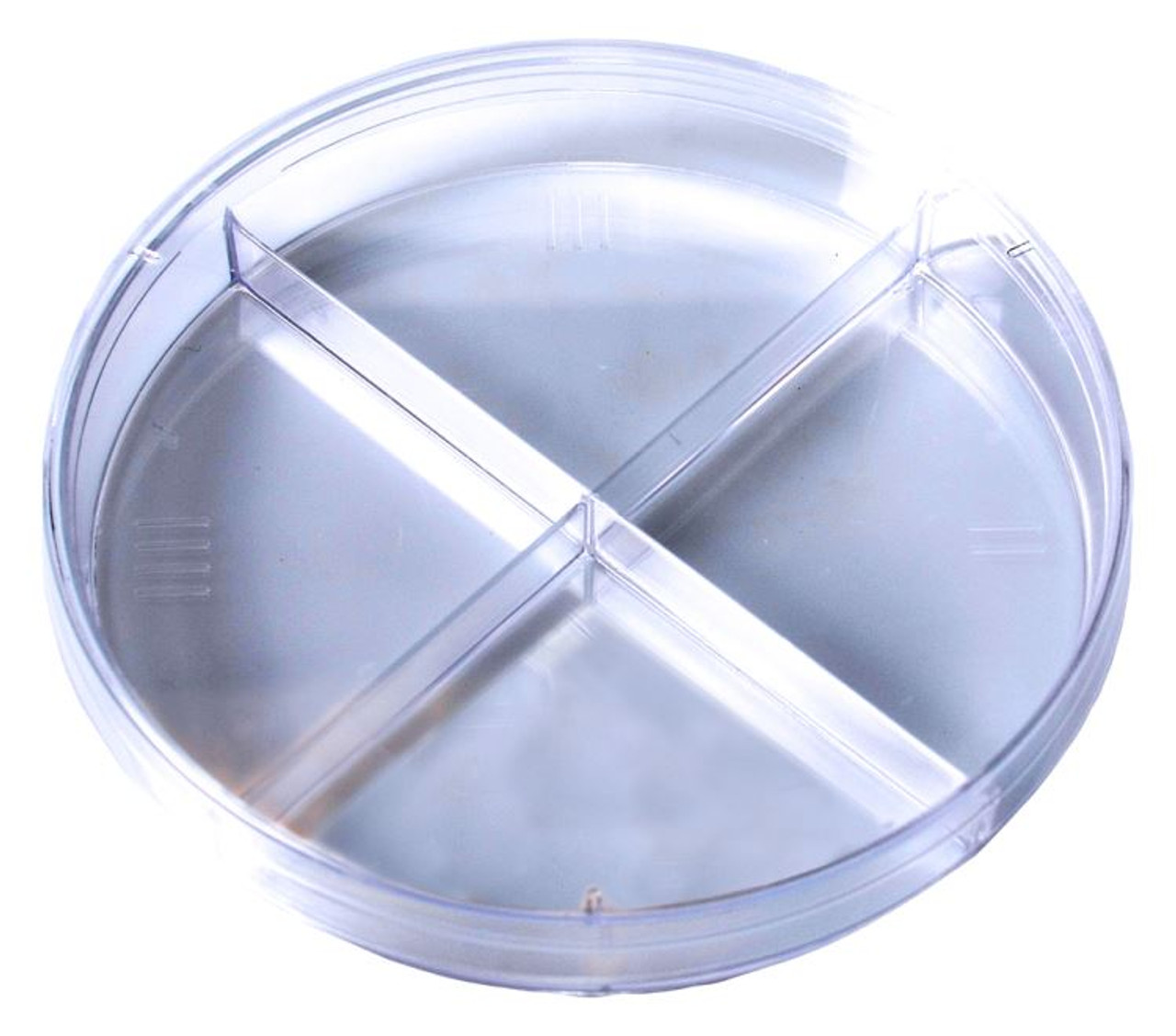Petri dishes are circular vessels made of highly visible glass or polystyrene with a fitted lid that are used for microbiology experiments.
Petri dishes can be as small as three and a half centimeters or as large as fifteen centimeters in diameter, and range in depth from fifteen millimeters to twenty-five millimeters depending on what is to be grown.
Petri dishes are commonly used for culturing and growing bacteria, fungi and yeasts. These microorganisms do not require controlled concentration of CO2 and O2 like mammalian cells.
A Petri dish is prepared by pouring a layer of nutrient rich media which gels and becomes the surface for growing microorganisms.
Some of the commonly used media for preparing Petri dishes are:
Nutrient agar, blood agar and MacConkey agar for bacteria and yeast organisms, and Sabouraud agar for fungi and yeasts.
What makes a Petri dish slippable or stackable?
Because Petri dishes are commonly prepared in large quantities at a time and may be filled in one location and then transported, Petri dishes need to be designed for quick processing as well as safe, sample handling.
Slippable Petri dishes are rimless and made to glide out of the technician’s hands smoothly and effortlessly like a Blackjack dealer distributing cards among players.
Slippable Petri dishes are ideal when media is added using an automated filling robot. Multiple Petri dishes are loaded into a sleeve and dispensed one at a time onto a moving belt where they are filled.
Stackable Petri dishes offer greater security since they cannot be easily toppled over and may be transported in locking stacks.
Transporting multiple slippable Petri dishes requires a carrying rack with a framework to support the Petri dishes from sliding apart.

For the ultimate in sample security, NEST Scientific offers a 90mm diameter Petri dish with a locking lid. Rotate the lid in one direction to secure, and in reverse to unlock and open the lid.

What are examples of divided Petri dishes and how are they used?
The most common types of divided Petri dishes are the:
“I” divided Petri dish, which creates two sections.
“Y” divided Petri dish, which creates three sections.
“+” divided Petri dish, which creates four quadrants.

Divided Petri dishes can also be used to prevent cross-contamination when different strains are being grown in close proximity.
Sometimes a divided Petri dish is chosen so that the researcher may observe how organisms behave in the presence of a barrier.
I-divided Petri dishes barriers can range from 2.7mm to 7mm tall.
What other types of Petri dishes are there?
Petri dishes are typically fifteen or twenty millimeters deep.
“Deep dish” Petri dishes are twenty-five millimeters deep which allows for increased agar media and nutrient content.

Gridded Petri dishes have gridlines etched into the bottom of the plate which make observing changes over time easier to plot.
Finally, there are even square Petri dishes with gridlines that are ideal for tracing the location of individual colonies.

Microbiology laboratories in every industry rely on Stellar Scientific to provide them with high quality Petri dishes in a wide range of formats.
Ask us about bulk discounts and price breaks for standing orders.



